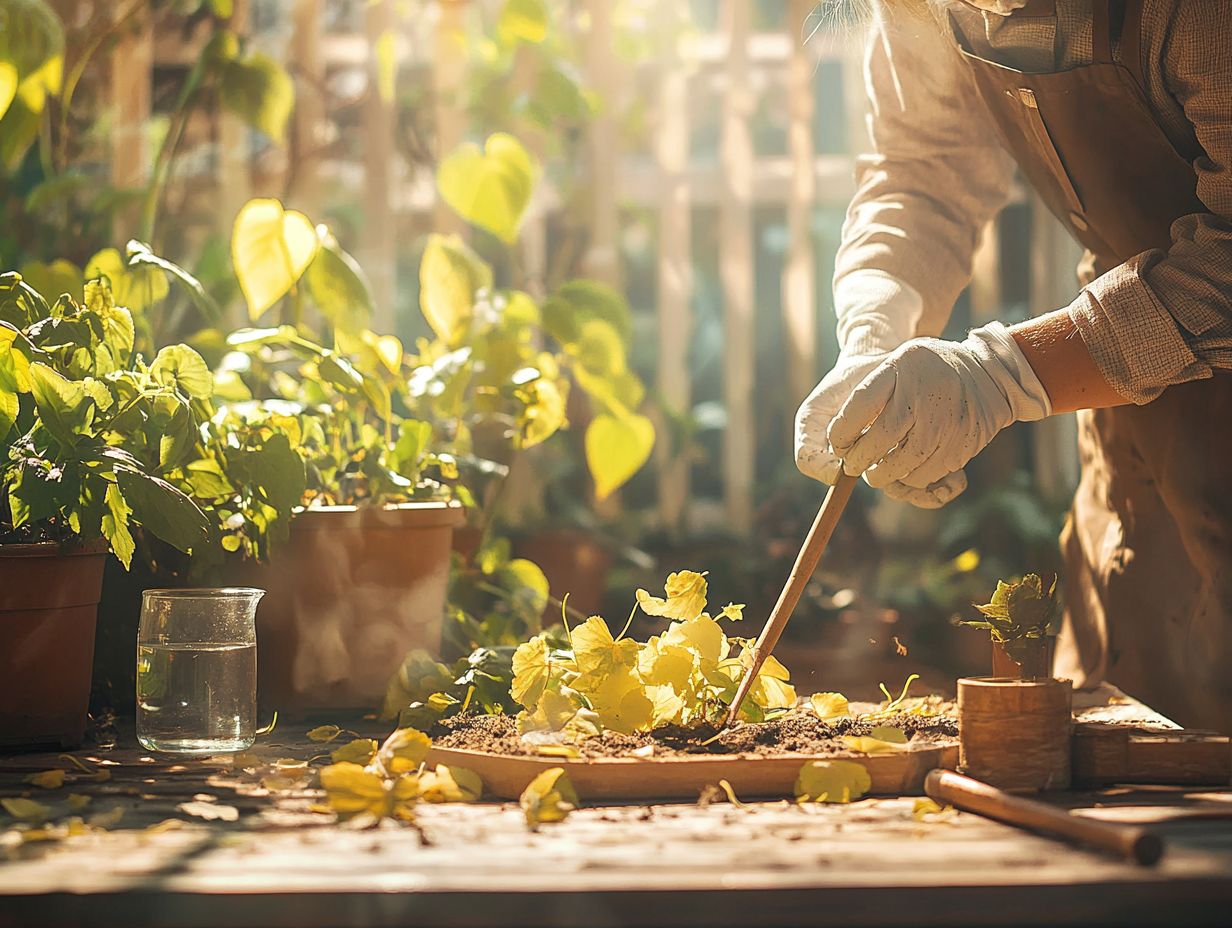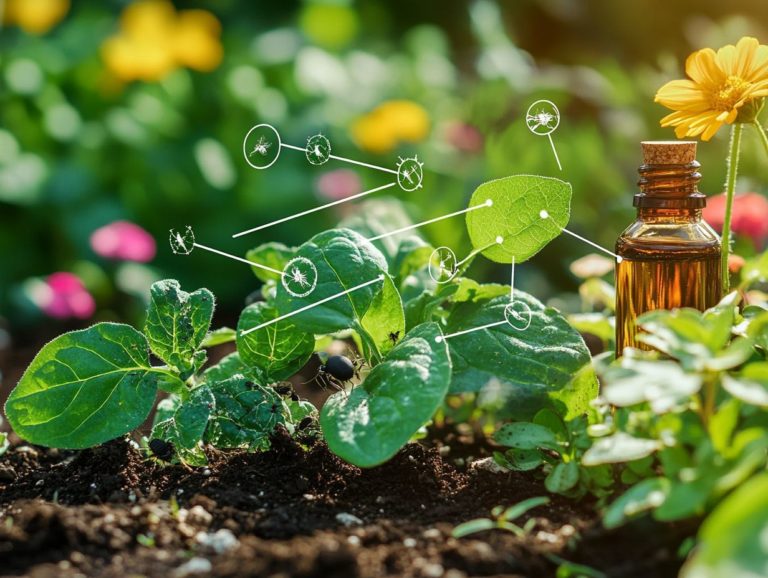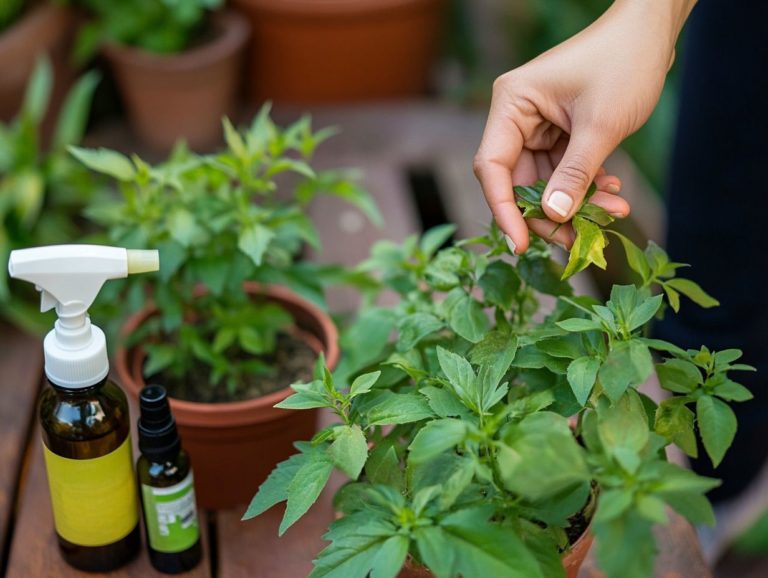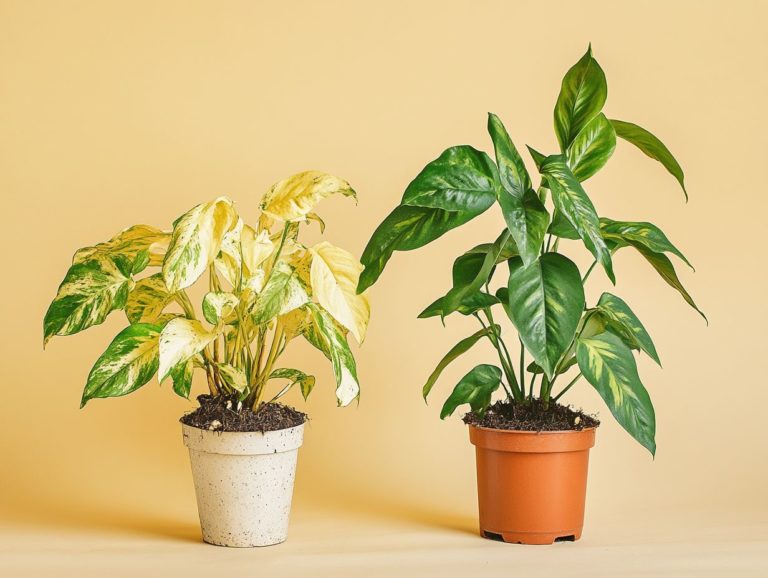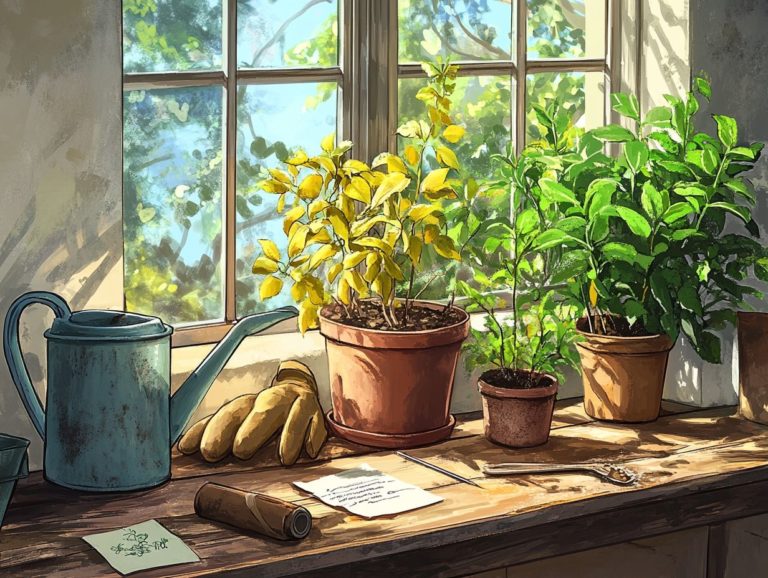How to Save Over-fertilized Plants
Over-fertilization can become your gardening nightmare, often causing more harm than good for your cherished plants.
This article delves into the causes and effects of over-fertilization, guiding you in identifying the symptoms across various plant types.
You ll find practical steps to rescue your over-fertilized greenery, along with tips to prevent future mishaps and recovery techniques to rejuvenate struggling plants.
Unlock the secrets to nurturing your garden back to vibrant health!
Contents
- Key Takeaways:
- Understanding Over-fertilization
- Signs of Over-fertilization
- Steps to Save Over-fertilized Plants
- Preventing Over-fertilization
- Reviving Damaged Plants
- Frequently Asked Questions
- 1. Worried your plants are over-fertilized? Look for yellowing leaves
- 2. Can over-fertilization be fixed?
- 3. What should I do if I suspect over-fertilization?
- 4. How often should I water over-fertilized plants?
- 5. Is there anything I can do to prevent over-fertilization?
- 6. Can I save my plants if they were severely over-fertilized?
Key Takeaways:
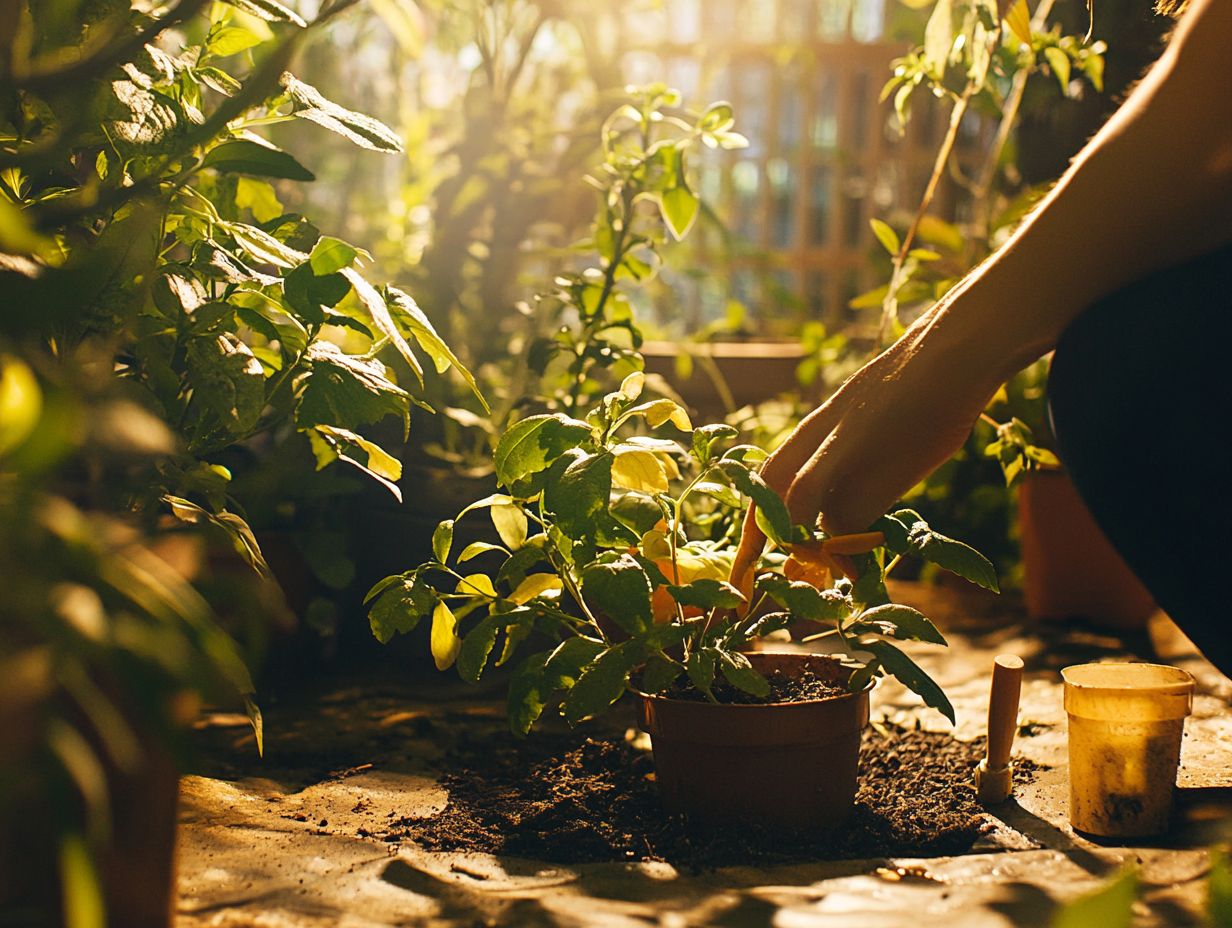
- Understand the causes and effects of over-fertilization on plants to prevent future damage.
- Identify signs of over-fertilization in different types of plants to take appropriate action.
- Take steps such as removing excess fertilizer and adjusting watering and soil conditions to save over-fertilized plants.
Understanding Over-fertilization
Over-fertilization happens when your plants receive too many nutrients, often leading to harmful effects on their health and growth. This problem often happens from improper fertilizer application, particularly with chemical formulas like 16-16-16.
This can result in distressing signs such as yellowing leaves and nutrient imbalances.
It’s not just your indoor plants that can suffer; outdoor plants can face significant challenges as well, necessitating prompt corrective measures. Get to know the root causes and consequences of over-fertilization to succeed in plant care and maintain a flourishing garden.
Causes and Effects on Plants
The causes of over-fertilization often arise from improper application of fertilizers, which can lead to detrimental effects such as fertilizer burn damage caused by too much fertilizer and nutrient imbalances in your plants.
Such issues frequently stem from using incorrect application rates or applying fertilizers at the wrong time especially when your plants are stressed or dormant. For instance, applying too much nitrogen during periods of rapid growth might seem like a good idea initially, but it can lead to chemical burns, manifesting as yellowing leaves and stunted growth.
Understanding your plant s root system is crucial; it guides you in determining the right feeding regimen needed to support healthy development. Many commercial garden centers highlight the importance of soil testing and recommend a gradual, methodical approach to fertilization. This not only mitigates risks but also promotes robust plant health.
Signs of Over-fertilization
Recognizing the signs of over-fertilization is essential for anyone dedicated to maintaining lush indoor and outdoor gardens. Symptoms like yellowing leaves and stunted growth often signal underlying nutrient imbalances.
By identifying these signs early, you can avert further damage to your plants and enhance your overall plant care strategies. Whether you re nurturing delicate houseplants or tending to vibrant outdoor flora, understanding these signs can greatly elevate your gardening success, enriched by insights from gardening charities.
Identifying Symptoms in Different Types of Plants
Different types of plants showcase various symptoms of over-fertilization, so it’s essential for you to effectively identify these signs to prevent serious damage.
For example, your indoor plants might reveal signs like yellowing leaves, wilting, or even burned leaf tips, while outdoor varieties could display stunted growth or an unexpected drop in foliage. Recognizing these differences is crucial to maintaining the health of your garden.
Regularly checking the soil moisture levels could save your plants! Pay attention to the color and texture of the leaves to spot any nutrient imbalances early on. To mitigate the effects of over-fertilization, consider flushing the soil with water, allowing those excess nutrients to leach out. Adjusting your fertilization schedule or opting for organic fertilizers can significantly enhance your plants’ resilience.
Steps to Save Over-fertilized Plants
Don t let your plants suffer! Act now to save them from over-fertilization. Rescuing over-fertilized plants demands a careful strategy. This involves removing damaged parts, washing out excess fertilizer, and restoring balance to the soil.
You can adopt effective gardening techniques to counteract nutrient buildup and enhance your plants’ health. By discerning which methods work best for both indoor and outdoor flora, you can ensure your plants flourish despite the challenges of over-fertilization.
Removing Excess Fertilizer
Removing excess fertilizer from the soil is a crucial step in rescuing your over-fertilized plants. It effectively leaches away nutrients and mitigates the risk of fertilizer burn.
Employing washing out excess fertilizer can make a significant difference. Allowing water to percolate through the soil helps wash away unnecessary salts and chemicals. Ensure that drainage is adequate; stagnant water can worsen the situation.
Carefully pruning any damaged parts will revitalize your plants and reduce their nutrient demands. By implementing these strategies, you can maintain a balanced nutrient profile in the soil, vital for promoting healthy growth.
Adjusting Watering and Soil Conditions
Adjusting your watering and soil conditions is essential to bring your plants back to life! Using distilled water helps wash out excess nutrients and restores balance.
This method shields your plants from further stress and encourages healthier growth in the long run. Understanding proper watering techniques and choosing well-draining soil significantly enhances nutrient absorption.
Incorporating organic matter, like compost, enriches the soil and helps rectify imbalances. Regularly checking soil pH (the level of acidity or alkalinity) and moisture levels enables informed watering decisions.
Techniques like deep watering allow roots to access moisture effectively, ensuring your plants thrive without becoming waterlogged or starved.
Preventing Over-fertilization
Preventing over-fertilization is essential for anyone wanting a vibrant and healthy garden. Avoid nutrient buildup and chemical burns by using proper fertilizer techniques and choosing organic options.
Adhering to effective gardening tips allows you to cultivate your plants with confidence. Minimize the risk of over-fertilization and promote healthier growth all around.
Proper Fertilizer Usage and Timing
Understanding proper fertilizer usage and timing is crucial for you as a plant owner. This prevents nutrient buildup and promotes healthy care.
This knowledge ensures your plants receive the perfect balance of nutrients, allowing them to thrive throughout their growth cycles. Selecting the right fertilizer and applying it at the right times significantly impacts your plants health, vitality, and bloom quality.
By following expert gardening tips, you can maintain optimal soil conditions that encourage better absorption. Remember, over-fertilization creates toxic conditions that harm your plants instead of nourishing them.
Being mindful of both the type and timing of your fertilizer applications is key to achieving lush, vibrant greenery in your home or garden.
Alternative Fertilizer Options

Exploring alternative fertilizer options, such as organic fertilizers, can greatly elevate your plant care routine while minimizing the risk of nutrient buildup and over-fertilization.
These alternatives come in various forms, including compost, fish emulsion, and worm castings. Each brings unique benefits for promoting robust plant growth. For example, compost enriches your soil with vital microorganisms, while fish emulsion offers a balanced nutrient blend perfect for nourishing leafy greens.
Incorporating these fertilizers into your regular plant care is easy. Start by mixing compost into the soil before planting or diluting fish emulsion in water for a gentle feed every few weeks. Remember to adjust the frequency based on how your plants respond and the seasonal growth patterns to ensure maximum effectiveness.
Reviving Damaged Plants
Reviving damaged plants calls for a careful approach that combines recovery techniques aimed at removing unhealthy foliage with enhanced care practices. This strategy helps bring your plants back to life, ensuring they thrive once more.
Recovery Techniques and Tips
Implementing effective recovery techniques is essential for restoring the health of over-fertilized plants. This may involve strategies like removing damaged parts and leaching out excess nutrients.
Along with these efforts, introducing soil amendments and organic fertilizers can significantly enhance your growing medium. This makes it more conducive to recovery by improving its structure and nutrient profile. Proper soil health is vital, so consider adding organic matter or visiting your local garden center for more options or compost to replenish essential elements.
Pay attention to your watering practices and plant care; for example, allowing the top inch of soil to dry out before watering again can prevent further stress on your plants.
These actionable gardening tips will guide you in making informed decisions, helping you revive struggling greenery and promote a more resilient garden ecosystem suitable for both indoor plants and outdoor plants.
Frequently Asked Questions
1. Worried your plants are over-fertilized? Look for yellowing leaves
Signs of over-fertilization and fertilizer burn include yellow or burnt-looking leaves, stunted growth, and wilting. You may also notice a white crust on the soil surface, indicating nutrient imbalances.
2. Can over-fertilization be fixed?
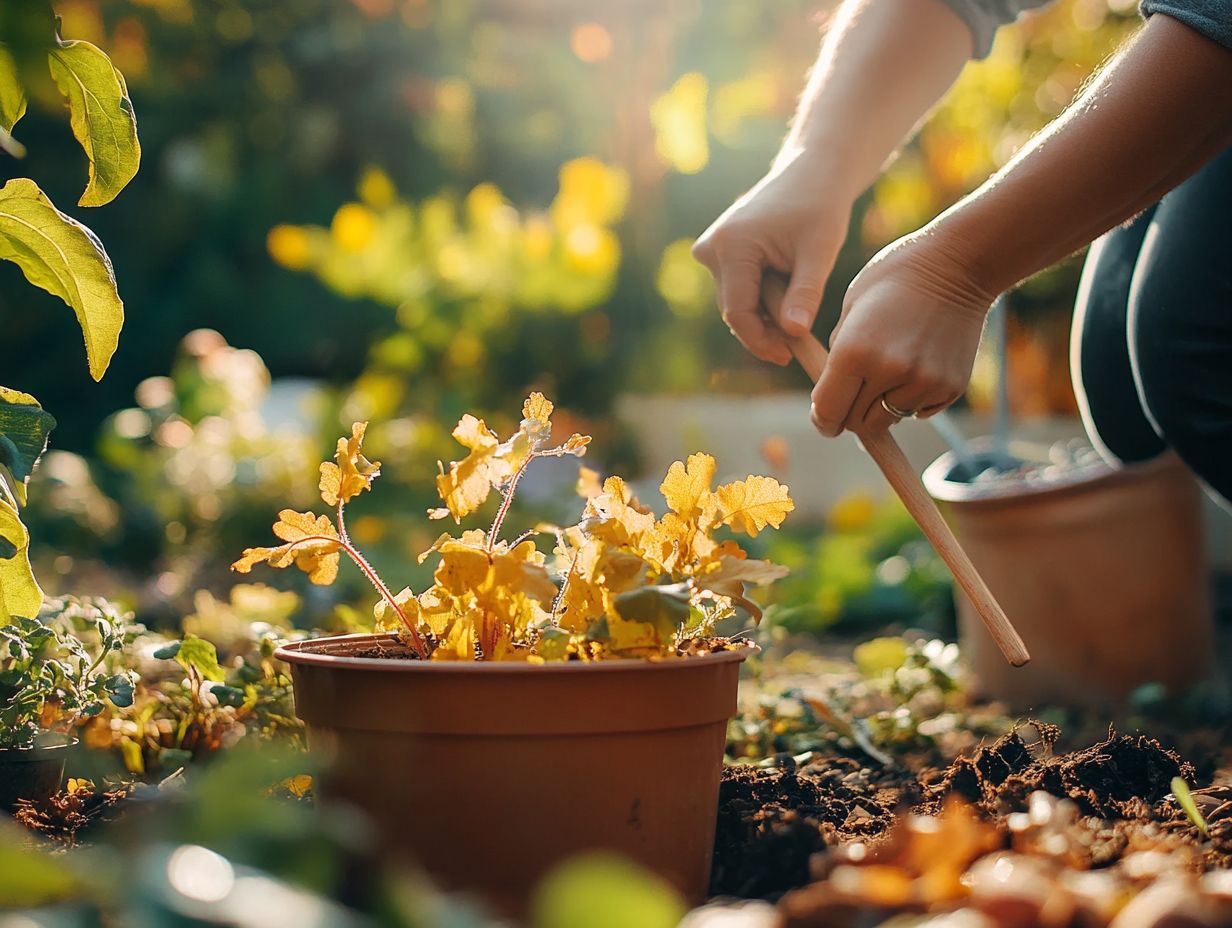
Yes, it is possible to save over-fertilized plants. However, immediate action is necessary to prevent further damage.
3. What should I do if I suspect over-fertilization?
The first step is to stop fertilizing the plants. Rinse the soil with water to flush out excess fertilizer. If possible, repot the plant in fresh soil. You may also need to trim off any damaged or burned leaves.
4. How often should I water over-fertilized plants?
After flushing out the excess fertilizer, it is important to keep the soil consistently moist, using distilled water if possible, but not waterlogged. This will help dilute any remaining fertilizer in the soil.
5. Is there anything I can do to prevent over-fertilization?
Properly reading and following the instructions on fertilizer packaging can help prevent over-fertilization. It is also important to only fertilize plants during their active growing season.
6. Can I save my plants if they were severely over-fertilized?
If the plant shows severe signs of damage, such as complete wilting or browning, it may be difficult to save. However, you can still try to flush out the excess fertilizer and repot the plant in fresh soil. Your plant may need time to bounce back, but with proper care, such as removing damaged leaves, it may survive.

